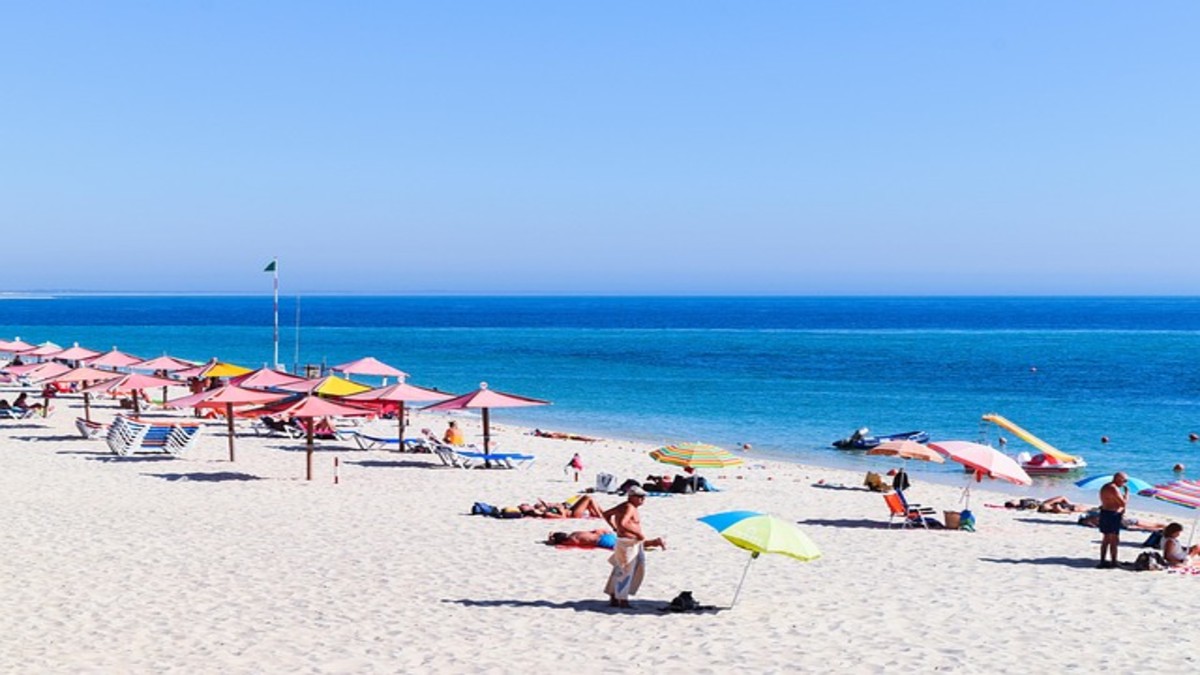Nude beaches have been around for quite a long time.
These are especially popular among naturists who believe in body acceptance and nudity in nature.
In line with this, nudist beaches in northern Germany have implemented new rules clamping down on half-hearted naturism.
The rules allow wardens to ban sunbathers wearing swimsuits and cover-ups.
Let’s take a closer look.
The ban
In Rostock, which is located on Germany’s Baltic Sea coast, new regulations are giving beach wardens the right to ban visitors who are too dressed at designated naturist-only (nudist-only) beaches.
“The presence on nudist beaches is reserved exclusively for people practicing nudism. Clothed bathing and clothed sunbathing are not permitted,” Rostock’s tourism authority said in a 23-page set of rules submitted to the city council.
The crackdown, which aims to provide clarity, follows a growing number of complaints from both non-naked sunbathers and nudists, according to CNN.
According to the report quoting Rostock Tourism’s Moritz Naumann, the rule is only meant to be applied in times of conflict and isn’t meant to force people to strip; rather, it’s meant to ensure that those who choose to do so can enjoy the experience without being scrutinised by onlookers.
The Ordnungsamt, the city’s public order authority, will patrol the area to enforce the regulation. Those who refuse to remove their swimming costumes, bikinis or trunks will not be asked to pay a fine but be asked to leave.
Some council members contend that granting nudists exclusive access to beaches is out of date and that the council lacks the staff necessary to enforce the controversial prohibition.
Rostock offers 15 km of beach that is separated into areas that are naturist-only, mixed-race, and textile-only, so all visitors’ needs are addressed.
There are a few rules to follow for those who are interested in naturism. All body shapes are accepted and encouraged, but it is strictly forbidden to stare, take pictures, or make offensive remarks.
Also read: Is Australia banning G-string bikinis on beaches? The debate explained
The Free Body Culture
With almost 3,700 kilometres of shoreline on the North and Baltic Seas, Germany has long been a refuge for nudists.
Officials are taking this step because they want to maintain these sandy areas in the spirit of Freikörperkultur (FKK), or Free Body Culture.
The movement is a long-standing German tradition that began about 130 years ago when the urge to reconnect through non-sexual public nudity was sparked by the fast industrialisation and urbanisation of the country.
It emphasises the idea that naturism can improve both mental and physical health while also celebrating body acceptance and nudity in the outdoors.
Some people viewed the FKK movement as a means of removing class barriers, while others considered it as healthy and wholesome.
In addition to beaches, the nation has a few parks and even hiking trails with long-distance nude regions.
But things are changing.
Younger people are reportedly becoming less involved in the movement. Thus, Rostock’s designated naturist beaches have decreased from 37 to 27 blocks.
The membership of the German Association for Free Body Culture (DFK) has drastically decreased, however, from 65,000 a quarter of a century ago to roughly 30,000 today. It had to call off its celebration to commemorate its 75th anniversary last year because of low turnout.
The average age of many nudist groups, which manage campgrounds and host sporting events like volleyball and petanque, is currently 60 years of age or older, according to The Times.
Generational conflicts exist between families with children and older naturists who prefer their alone time.
According to Alfred Sigloch, the president of the DFK and the most prominent nudist in Germany, social media is partially to blame for the decline of nudism since it encourages a “perfect body image” that makes many young people uncomfortable about being nude.
Naturism in other countries
Globally, naturism remains popular.
In Spain, for instance, public nudity has been legal since the late 1980s. Some of its popular nude beaches are Es Cavallet Beach on Ibiza, Playa de Ses Illetes on Formentera, and Es Trenc on Mallorca.
Several other European countries accepting social nudity are Norway, Sweden, Denmark, Finland, and Croatia.
The world’s most iconic nude beaches are Plage de Tahiti in Saint-Tropez, France, Black’s Beach in California, Little Beach in Maui, Hawaii, and Lady Bay Beach in Australia’s Sydney.
With inputs from agencies
)